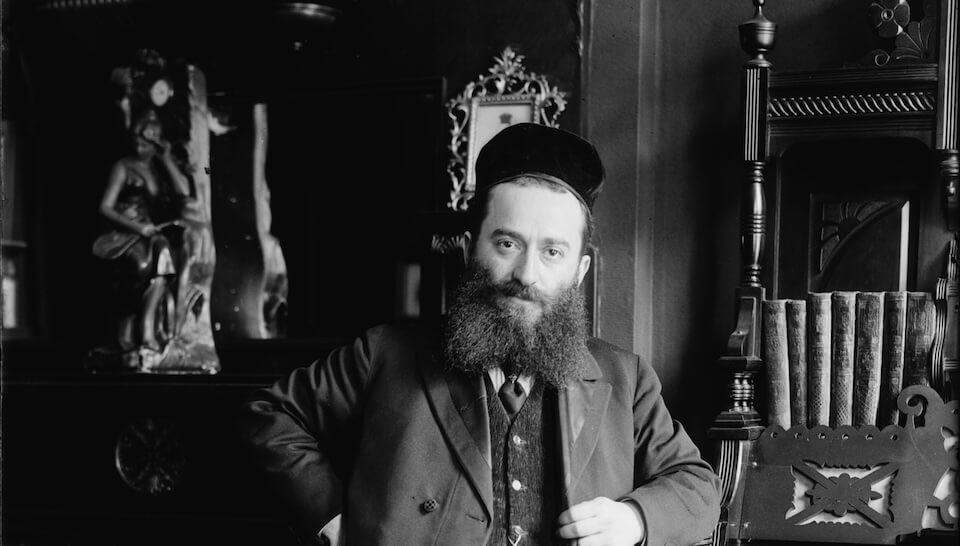How did the letter ayin become a vowel in Yiddish?

Graphic by Angelie Zaslavsky
Read this article in Yiddish
A recent article on the website, Seforim Blog, compares the phonetics of biblical Hebrew and Arabic. In the post, the author, Rabbi Avi Grossman, remarks that he “cannot fathom” why the letter ayin (ע) in Yiddish became a vowel roughly equivalent to the Latin letter E and asks his readers if anyone can explain how this spelling convention came about.
The article provoked a lively discussion on Facebook among Yiddish writers and linguists but none of them were able to answer the query.
If you think about it, though, one could just as easily ask: how did the letter hey (ה) evolve into the Latin E and why did ayin (ע) turn into the letter O? The Greek alphabet was created about 2,800 years ago and modeled on the Phoenician alphabet, the ancestor of the Hebrew and Arabic alphabets. Most Greek dialects of the time had no H sound, let alone the Semitic guttural consonant represented by ayin (ע), so the ancient Greeks turned these two consonants into vowels. The Latin alphabet then inherited the same system from Greek, where they became the vowels E and O respectively.
Later, during the period of the second biblical temple, many Jews stopped pronouncing the ayin (ע) sound, especially in the Galilee. The Talmud, for example, uses two synonyms, ארכי (office, court of elders) and ערכי (records office), descended from the same Greek root “arch” (αρχή) meaning “boss” or “power”, that today is found in words like architect and anarchy. The Talmudic Aramaic word ערכאות, meaning a non-Jewish court, stems from the same root. Loan words in Aramaic taken from Greek and other languages with an A or E sound are almost always transcribed with an aleph (א) but here the loss of the guttural ayin (ע) sound is evident by its use to denote a vowel.
Some linguists believe that Ashkenazi Hebrew once had a nasalized variant of the Semitic ayin (ע) that was similar to an N. Perhaps that is why an N sound appears in the name Yankl and in the word מעשׂה (story), which is pronounced in many Yiddish dialects as “manse.” By the 14th or 15th centuries, however, the ayin (ע) sound had completely fallen out of Ashkenazi Hebrew and medieval Jews did just what the Greeks had done 2000 years earlier: used the “useless” letter as a vowel.
But why ayin (ע)? I’d like to propose my own hypothesis. To begin with, no other letter would have sufficed: aleph (א), vov (ו) and yud (י) had always been used to represent vowels. But perhaps there’s another reason: the ayin (ע), especially in handwritten form, looks a bit like the vowel-marking segol, whose sound roughly represents the Latin alphabet E. And as such Jews writing Yiddish turned the ayin (ע) into an alternate marker for the segol vowel.
In Arabic the vowel marking that represents U, Damma, looks like a variant of the Arabic letter Waw (و), equivalent to the Hebrew Vov (ו). In Syria some Christians devised another system: writing vowels in Aramaic as small Greek letters above or below the Aramaic consonants. In Middle Eastern churches, where the liturgical language remains Syriac, a form of Aramaic, this mixed alphabet, called Serta, is used to the present day. The same word can be found, by the way, in the Talmud, and means a “line of text” or “writing.” The Modern Hebrew word for movie, tape or film, seret (סרט), is derived from the same root.
Introductions to a Yiddish work called “Book of Morals” (1541) and a Yiddish translation of Josippon (1546) give the same explanation: “ayin (ע) is pronounced as a segol.” It’s possible that early Yiddish writers did just the opposite of what the Arabs and Syriac Christians did: interpreted the three-sided letter ayin (ע) as a form of segol.





















